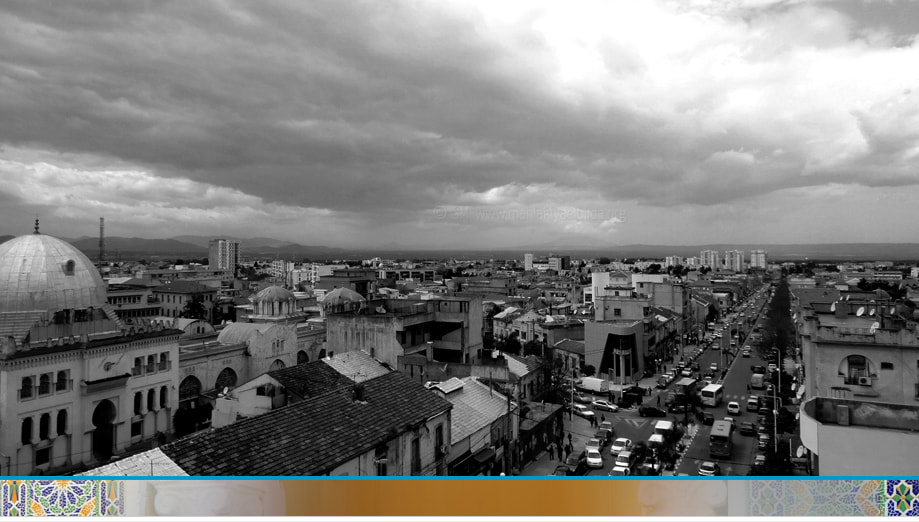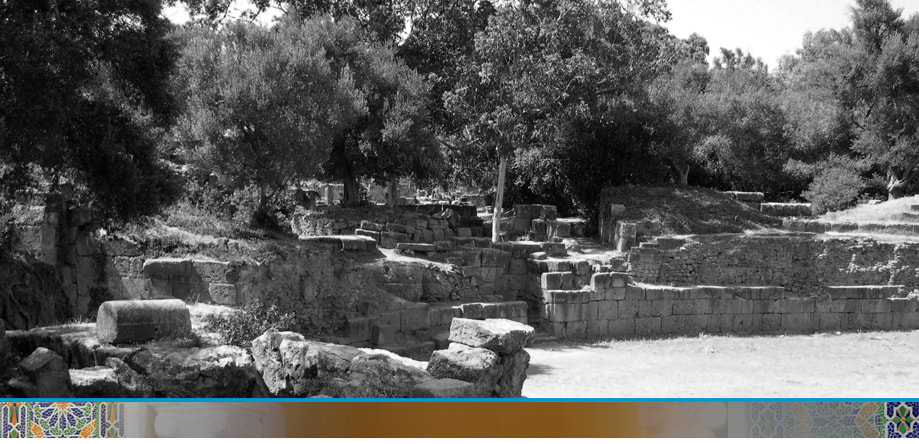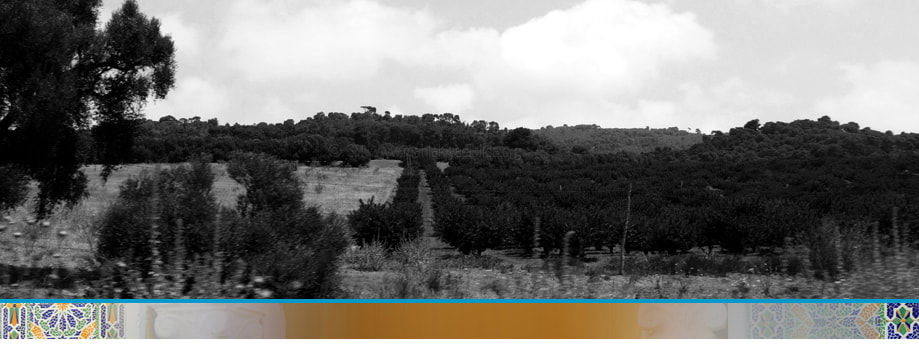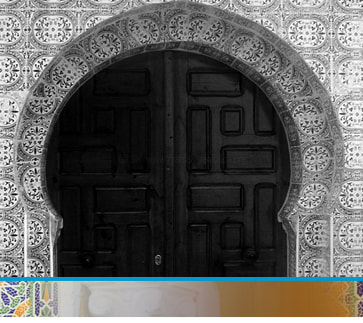Blida in the olden time
Blida was founded in the early 16th century. The word Blida originates from the classical Arabic word 'Boulaida', meaning small country or city. It is the diminutive of the Arabic word bilad (country)/belda (city), which becomes in Algerian Arabic dialect Blida and used by the French during their colonisation of Algeria.
Blida was blessed with natural water resources and fertile lands. It would go on to become the capital of the Mitidja region in Algeria. Blida's history is part of the whole region's history.
Blida was blessed with natural water resources and fertile lands. It would go on to become the capital of the Mitidja region in Algeria. Blida's history is part of the whole region's history.
Blida's past history in brief
Blida in the olden time
The distant unknown history: Between 'hypothesis and suggestions'
According to some suggestions and writing, Blida was built on a Roman military site. Those in support of this idea think that the Romans were known to choose strategic lands to build their towns upon. Blida’s geographical strategic position is important connecting the east to the west and the south to the north of Algeria.
Blida also has connected natural features; being in the heart of the Mitidja plain, it is surrounded from the south by mountains, and is a ‘piedmont location’- sitting beneath the Tell Atlas Mountains and not far from the Mediterranean sea. In addition, Blida as an area is favoured with naturel water sources. All these natural features coupled with the strategic positioning of the city have let some to hypothesise that Blida was built on the place of a Roman site. In contrary, some suggest that the Romans would not build a military site under a mountain as this would leave them vulnerable and open to attacks.
In order for the ‘Roman link’ hypothesis to stand, some Roman antiques or vestiges would have to be found in Blida. However, due to the violent earthquakes that the town has suffered in the past, this would prove to be a difficult task. In addition, floods may have erased any ancient or pre historical evidence if there was any.
Blida also has connected natural features; being in the heart of the Mitidja plain, it is surrounded from the south by mountains, and is a ‘piedmont location’- sitting beneath the Tell Atlas Mountains and not far from the Mediterranean sea. In addition, Blida as an area is favoured with naturel water sources. All these natural features coupled with the strategic positioning of the city have let some to hypothesise that Blida was built on the place of a Roman site. In contrary, some suggest that the Romans would not build a military site under a mountain as this would leave them vulnerable and open to attacks.
In order for the ‘Roman link’ hypothesis to stand, some Roman antiques or vestiges would have to be found in Blida. However, due to the violent earthquakes that the town has suffered in the past, this would prove to be a difficult task. In addition, floods may have erased any ancient or pre historical evidence if there was any.
The Mitidja connection
As mentioned earlier, the existence of the Romans in present-day Blida is only a suggestion as there has been no archaeological research or historical studies in relation to this subject. However, there are other suggestions that different ancient occupiers who invaded Algeria may have visited the Mitidja plain because of its fertile land.
The Phoenicians and Romans did live nearby in
the coastal areas of Tipasa and Cherchell, not far from Blida.
the coastal areas of Tipasa and Cherchell, not far from Blida.
The ‘Mitidja’ is a plain in northern Algeria. It includes five Wilayas (provinces): Algiers, Blida, Boumerdes, Tipasa and the north East of Medea. Its surface consists of around 1400Km squared, over 100km in length and around 5-25km in width. With a Mediterranean climate and fertile land, the Mitidja is a rich agricultural plain. Blida being the heart of the Mitidja is situated between the Atlas Tell Mountains in the south and the Mediterranean sea in the north. Blida is known for its numerous titles of being the capital, la Perle (Pearl) and la Reine (Queen) of the Mitidja plain.
There is clear historical evidence that the Phoenicians and Romans did live nearby in the coastal areas of Tipasa (40km from Blida) and Cherchell (66km), not far from Blida.
The ‘Mitidja Plain’ and the surrounding areas’ history is long and old with vestiges and antiques found between Tipasa and Boumerdes. Cherchell historic museum provides a great example of some of the ancient history and evidence found here.
The ‘Mitidja Plain’ and the surrounding areas’ history is long and old with vestiges and antiques found between Tipasa and Boumerdes. Cherchell historic museum provides a great example of some of the ancient history and evidence found here.
Phoenicians were dealing with the Kbail or Amazigh (Berbers) tribes,the natives of the present-day Mitidja plain and the Atlas Tell. Their main business included figs, wool, olives, and leather.
According to different historical sources, the Phoenicians arrived to the area of Mitidja long before the Romans, in order to trade from Carthage (in present-day Tunisia) to Algeria. Modern day Annaba, Skikda, Tipasa and Cherchell were used as ports for their sea fleet. It is said that Tipasa is a Phoenician name. They also called Cherchell ‘Yul or Jol’, Gouraya ‘Ouraya’ and Algiers ‘Icosium’.
There was business trade between Phoenicians and those in Icosium (Algiers) however Algiers was not that populated at the time, and therefore the
Phoenicians were dealing with the Kbail or Amazigh (Berbers) tribes, the natives of the present-day of the Mitidja plain and the Atlas Tell. Their main business included figs, wool, olives, and leather.
There was business trade between Phoenicians and those in Icosium (Algiers) however Algiers was not that populated at the time, and therefore the
Phoenicians were dealing with the Kbail or Amazigh (Berbers) tribes, the natives of the present-day of the Mitidja plain and the Atlas Tell. Their main business included figs, wool, olives, and leather.
Have the Romans ever lived in the Mitidja area?
After the Phoenicians and the Carthagians, came the Romans. The Romans conquered all of North Africa. Many areas in Algeria were important to the Romans and one of them was Cherchell, 66km from Blida. The Roman presence in the centre and northern areas is well documented.
Historians have suggested that the Romans were also interested in the Mitidja plain for agriculture and meat trade. It is known that they used their colonies in North Africa (including Algeria) to export agricultural products.
There are also suggestions that Mitidja was mentioned as being part of the ‘Mauretania Caesariensis’ (modern Cherchell), an ancient Roman province in what is now Algeria in the Maghreb (north of Africa). It is also said that the old Greek historian and geographer Strabon believed Mitidja to be a fertile land, producing wheat twice a year.
Historians have suggested that the Romans were also interested in the Mitidja plain for agriculture and meat trade. It is known that they used their colonies in North Africa (including Algeria) to export agricultural products.
There are also suggestions that Mitidja was mentioned as being part of the ‘Mauretania Caesariensis’ (modern Cherchell), an ancient Roman province in what is now Algeria in the Maghreb (north of Africa). It is also said that the old Greek historian and geographer Strabon believed Mitidja to be a fertile land, producing wheat twice a year.
Once the Roman occupation of North Africa collapsed, in the 5th century, the Vandals (East Germanic tribes) occupied the Maghreb area (northern parts of Africa), including Algeria. Then after a century, the Byzantines, known as the Eastern Roman Empire took over and eradicated the vandals and occupied the area for more than a century.
The arrival of Islam
|
From 640 to 750, North Africa saw the arrival of the Arab Muslims. In the middle of the seventh century the religion of Islam and the Arabic language were introduced and spread to North Africa, including present-day Algeria, Morocco, Tunisia, and Libya. It was part of what is known in Islamic history as the ‘Foutouhete el Islamiya’. From the 7th century to the 17th century, Algeria lived under different Muslim eras and dynasties including the Muslim Turkish Ottoman Empire period until the French invasion and occupation of the
country in 1830. |
HISTORY FROM THE DISTANT PAST
History is a sensitive and delicate subject that relies on many factors. How many ancient written manuscripts of Blida are in existence? How much of this heritage was protected against theft, negligence and disintegrated through natural causes such as heat, light, inadequate storage, etc. How many preventive measures were there to preserve archives of centuries ago? R E A D M O R E >>




















